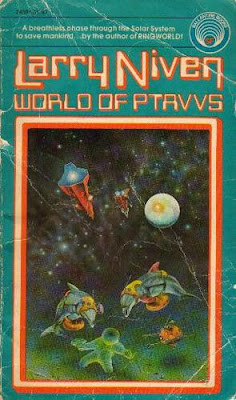There is, of course, a long tried method of learning chess: find a bunch of people that want to play chess and go fight with them. Like that old Army line:
join the Army, meet interesting people, kill them. But also obvious is that this is not the best method there is. You meet old men that play chess every day with other old men that have a lot of time on their hands and, even if they kick your ass rather quickly, you often find ways of defeating them because all their play is organic, lacking a principled structure. And that is what this post is about. I am the least principled player out there, as I have a ridiculously leaky memory and am rather greedy (I want fun games, now, not dirty principles), and therefore I get often beaten by people that should not have been able to defeat me. And, like in the old adventure games:
So, you want to be a (principled) chess player - this is the quest.
First of all, don't google "how to learn chess" as you will get swamped by all the chess players that think they can teach you for money and all the software that you need to buy and all the DVDs that you absolutely need to buy. That doesn't mean that if you are patient you wouldn't eventually find what you need and, being a wannabe chess player, you should have a little patience. But if you are like me (why do I want to play chess again?) you don't have patience. Second of all, don't start with chess books. You can find zillions of them on the web, but in order to read them you will have to become very familiar with a chess board. Unlike a video, they will require to read the book with a chess board at hand and do the moves as you read. That pretty much means you can read them only in specific settings and you will feel like an idiot for reading a page a day. Books are great, but not for beginners.
Then there are some free online resources that one can use, lovely chess sites like
JRobiChess.com,
theChessWebsite or
ChessVideos.tv, where one can get multiple opportunities to learn: grandmaster games, videos, tutorial, references. These are great, and I thoroughly recommend them. Also, look for "chess" on YouTube and you will find a plethora of people discussing and teaching chess, some of them completely for passion alone. On JRobi's site you can even find a chess study time recommendation: Opening Study – 10%, Tactical Puzzles - 20%, Endgame Study – 10%, Analyzing Your Games – 30%,Analyzing Master Games – 30% of Time. Let's analyse this plan a little bit and some very interesting ideas will emerge.
As you can see, there is time allotted for openings, only a tenth of the time, and the same amount of time for endgames. This leads to the first very important idea:
endgames are (at least) just as important as openings. If you think about it, most of the amateur games, played for fun and not for some chess rating, are spectacularly inaccurate and end in quick mates. That means that most of the "go get'em" practice will teach you about openings and some of the middle game. Once in endgame territory, we are suddenly beginners again, trying to get by and failing miserably. That's why it is important to spend time with endgames.
Josh Waitzkin, a US champion at chess, recommended learning endgames even more than openings. He described how, by careful study of just a few pieces on the board (two kings and a pawn, or some other piece, the usual endgame scenarios) he would emerge slightly disadvantaged in the endgame, then crush his opponent, less instructed in this most important part of a chess game. The opening and endgame learning is only a fifth of all learning time, though. Other things are even more important.
20% tactical puzzles. This is the equivalent of learning karate moves out of context. You are not fighting anybody, but you learn to hit them in a particular way. You don't have the pressure of a game, you have all the time in the world, find the best move!
Both JRobi's site and Kevin's (theChessWebsite) have daily tactical puzzles. This is actually one of the few exercises that I do almost every work day: I open their sites and do those puzzles. But let me tell you something: if you open a chess book with tactical puzzles, you get some really nasty, mind boggling stuff. These online ones, at least the two I mentioned, are made for people that if they don't immediately see the answer, they start trying moves until they get them right. I should know; that
hint button also gets heavy use. So this is one of the moments when I can recommend books, but start with the online ones first and try to see them through
before moving.
Now comes the heavy part. We've covered a little more than a third of the time one should spend on chess learning, according to JRobi. The other two thirds are analysing games. That is it. Take the game out of the competition and clinically dissect it until you learn everything there is to learn. A major idea comes out of this, though:
if you need to analyse your own games, that means someone must record them as you play. Professional and club games have score cards: they write every move they and their opponent make, the score, even small comments (you will see what I mean when we get to PGNs) and they sign each other's cards at the end of the game. I've never done it, but I imagine it is satisfying to get your adversary to sign their own defeat while you desecrate their own card with your victory scribble (heh!). I also imagine it adds to one's motivation, getting this kind of direct recognition of your effort in the game. Another option, much easily available, is to load a chess game on your mobile phone and set it to two player game. Once you make a move, you make it on the phone as well. At the end, you download the
PGN file on your computer for later analysis. With a chess engine at hand and all the time in the world you can see where mistakes were made, where good moves changed the score balance and what was missed. A spectator of the game can do that for you, as well. I originally planned to write in this blog about analysing games, but it has become too long already. I will, therefore, detail that particular part in
another blog post.
Of course, analysing the games played at grandmaster level shows how other people are thinking when playing the game. It's not unlike reading material relevant to your line of work. You may be smart, but you are not expecting to think of everything that may be of use to you in a specific context. You read what other wrote on the subject and gain inspiration. And when you see a giant chess player sacrifice a queen for two knights and then mating the other guy in another ten moves, you also gain humility (or you close the bloody game and go watch a movie or something). Indeed, try not to let it get to you. Grandmasters are not geniuses that can outthink you at every step, monsters that can intellectually squash you like a bug, they are people just like you that also dedicated their lives to the game of chess.
Professional chess players do it for life. Expecting to understand what they did without a lot of effort is a stupid expectation. It is important to analyse their games and learn from both their mistakes and brilliant moves.That leaves us with the endgame of this post: computer chess tutors. That is different from playing chess with your computer or pad or cell phone. That enters the first category of just playing. Computers also play differently than people, they are great at not making mistakes and punishing yours, but their design also allows for moves that would mate you in 235 moves or something like that, which is insane for any human being. Don't get me wrong, computers are great practice, but consider that if you beat them at a certain difficulty level, it is because they were programmed to let you. With the computing power available today, a cell phone would probably be able to beat Kasparov. So, back to chess tutors. I've only found one that I liked, and that is the ChessMaster XI game. Incidentally, there is where I've learned of Josh Waitzkin, as he is the voice and mind behind the game tutorials. I've also heard a lot of Fritz, but I haven't found a context where it really tutors you. Fritz is bundled with ChessBase and there are some tutorials with board, PGN games and video that use ChessBase to teach you stuff. There are probably some ChessBase based tutorials, but I haven't searched for them yet.
So, I leave you with this little research I've done, I hope it helps you get better and encourages me to heed my own advice. Serial Experiments Lain is a strange little anime. It reminded me a bit of Dennou Coil, but the subject was more akin to the show Caprica, as it covers virtual worlds, disembodied conciousness, gods and the barriers between what is real and what is "Wired". It was also psychedelic as hell at times, full of fractured philosophical ideas that were presented in digital like flashes.
Serial Experiments Lain is a strange little anime. It reminded me a bit of Dennou Coil, but the subject was more akin to the show Caprica, as it covers virtual worlds, disembodied conciousness, gods and the barriers between what is real and what is "Wired". It was also psychedelic as hell at times, full of fractured philosophical ideas that were presented in digital like flashes.